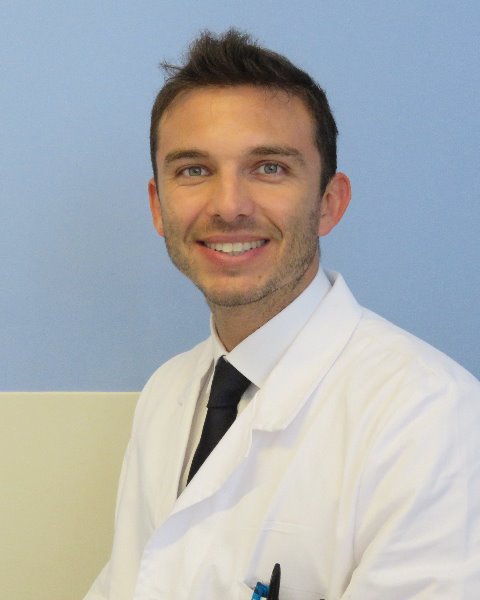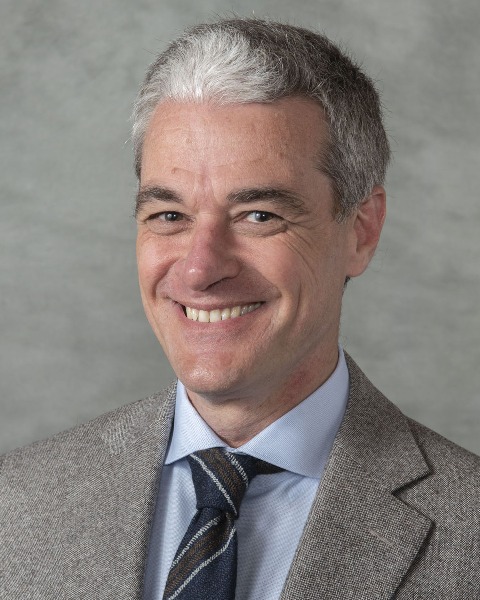Sarcoma
P60: Risk prediction of severe morbidity and mortality after retroperitoneal sarcoma surgery: retrospective analysis of available perioperative risk-calculators accuracy.

Michela Angelucci, MD
Resident
U.O.S. Chirurgia dei Sarcomi dei tessuti molli, Fondazione Policlinico Universitario Campus BioMedico, Rome, Italy, Italy
Michela Angelucci, MD
Resident
U.O.S. Chirurgia dei Sarcomi dei tessuti molli, Fondazione Policlinico Universitario Campus BioMedico, Rome, Italy, Italy
Michela Angelucci, MD
Resident
U.O.S. Chirurgia dei Sarcomi dei tessuti molli, Fondazione Policlinico Universitario Campus BioMedico, Rome, Italy, Italy- MB
Marco Baia, M.D
Surgical oncologist
Sarcoma service, Fondazione IRCCS Istituto Nazionale dei Tumori, Milan, Italy, Italy - MG
Marilù Garo, Independent Research
Researcher
Independent Research, Rome, Italy, Italy - SP
Sandro Pasquali, MD, PhD
Surgical Scientist
Molecular Pharmacology, Department of Experimental Oncology, Fondazione IRCCS Istituto Nazionale dei Tumori, Milano, Italy, United States 
Dario Callegaro, MD (he/him/his)
Surgical oncologist
Sarcoma service, Fondazione IRCCS Istituto Nazionale dei Tumori, Milan, Italy, United States- SR
Stefano Radaelli, MD
Surgical oncologist
Sarcoma service, Fondazione IRCCS Istituto Nazionale dei Tumori, Milan, Italy, United States - CC
Chiara Colombo, MD
Surgical Oncologist
Sarcoma Service, Department of Surgery, Fondazione IRCCS Istituto Nazionale dei Tumori, Milan, Italy, United States - RA
Rossana Alloni, MD, Prof
Professor of Surgery
Department of Medicine and Surgery, Università Campus BioMedico, Rome, Italy, United States 
Alessandro Gronchi, MD, FSSO
Chief of Surgical Department
Sarcoma Service, Department of Surgery, Fondazione IRCCS Istituto Nazionale dei Tumori, Milan, Italy
Milano, Italy- SV
Sergio Valeri, MD
Surgical oncologist
U.O.S. Chirurgia dei Sarcomi dei tessuti molli, Fondazione Policlinico Universitario Campus BioMedico, Rome, Italy, Italy - MF
Marco Fiore, MD, FEBS, FACS
Surgical Oncologist
Sarcoma service, Fondazione IRCCS Istituto Nazionale dei Tumori, Milan, Italy, United States
ePoster Presenter(s)
Submitter(s)
Author(s)
Retroperitoneal Sarcoma (RPS) often require multivisceral resection (MVR) and severe morbidity is documented; it has been estimated that 5% of primary RPS are not operated for non-acceptable perioperative risk. A specific predictive tool for morbidity risk is not available, while the applicability of existing tools (ACS-NSQIP and P-POSSUM) has been questioned.
The aim of this study is to investigate the accuracy of those calculators in RPS surgery.
Methods:
Retrospective analysis of primary RPS in two referral centre was conducted (2012 – 2022). Predicted morbidity/mortality rates were stratified according to the existing calculators and compared with observed data. Postoperative morbidity was recorded at 90 days and classified according to both Clavien Dindo (CD) and Comprehensive Complication Index (CCI), mortality was recorded at 30 days.
Accuracy of ACS-NSQIP and P-POSSUM was determined by means of Brier Score and area under the curve (AUC), tested against the value of 0.7. Conventional statistics were used to compare patient-tumor-related characteristics.
Results:
The study included 567 patients, median age 62 year (IQR 51-70), with a median of 4 resected organs (IQR 3 -5). 336 patients (59.3%) experienced a surgical complication of any CD grade, median CCI of 20.9 (IQR 0 – 33.5). Events graded CD≥3 occurred in 173 cases (30.5%), mortality at 30 days was 1.1%. Severe complications occurred later than 30 days from surgery in 3.5% (6/173) of cases. The estimated overall complication rate according to the ACS-NSQIP calculator was predicted below average for 369 (65.1%), average for 96 (16.9%) and above average for 102 (18%) patients. The event of serious complication was predicted to be below average for 368 (64.9%), average for 65 (11.5%) and above average for 134 (23.6%) patients. P-POSSUM predicted morbidity rate was 66% (IQR 54.7% - 79%) and mortality 4% (IQR: 2.6% - 9%).
Testing the accuracy of the calculators none of these proved to be adequate predictors, with Brier score respectively 0.229, 0.205, 0.155 for P-POSSUM; 0.231, 0.206, 0.154 for ACS-NSQIP for the events of any complication, serious complication (CD≥3) and death. None of the investigated tools reached an AUC ≥ 0.7.
Conclusions:
Overall morbidity burden at 90 days after MVR is relevant, and deserves reliable evaluation, especially in frail patients. Nonetheless, this study showed how morbidity and mortality cannot be adequately predicted by ACS-NSQIP and P-POSSUM, advocating a new dedicated prediction tool for perioperative events in RPS candidate to MVR.
Learning Objectives:
- know the prevalence of morbidity and morality in retroperitoneal sarcoma surgery graded according to both Clavien-Dindo and Comprehensive Complication Index
- understand the role of available predictor tools for postoperative morbidity and mortality in retroperitoneal sarcoma surgery
- know the critical points of available predictor tools for postoperative morbidity and mortality in retroperitoneal sarcoma surgery and the need for a specific tool to be developed
